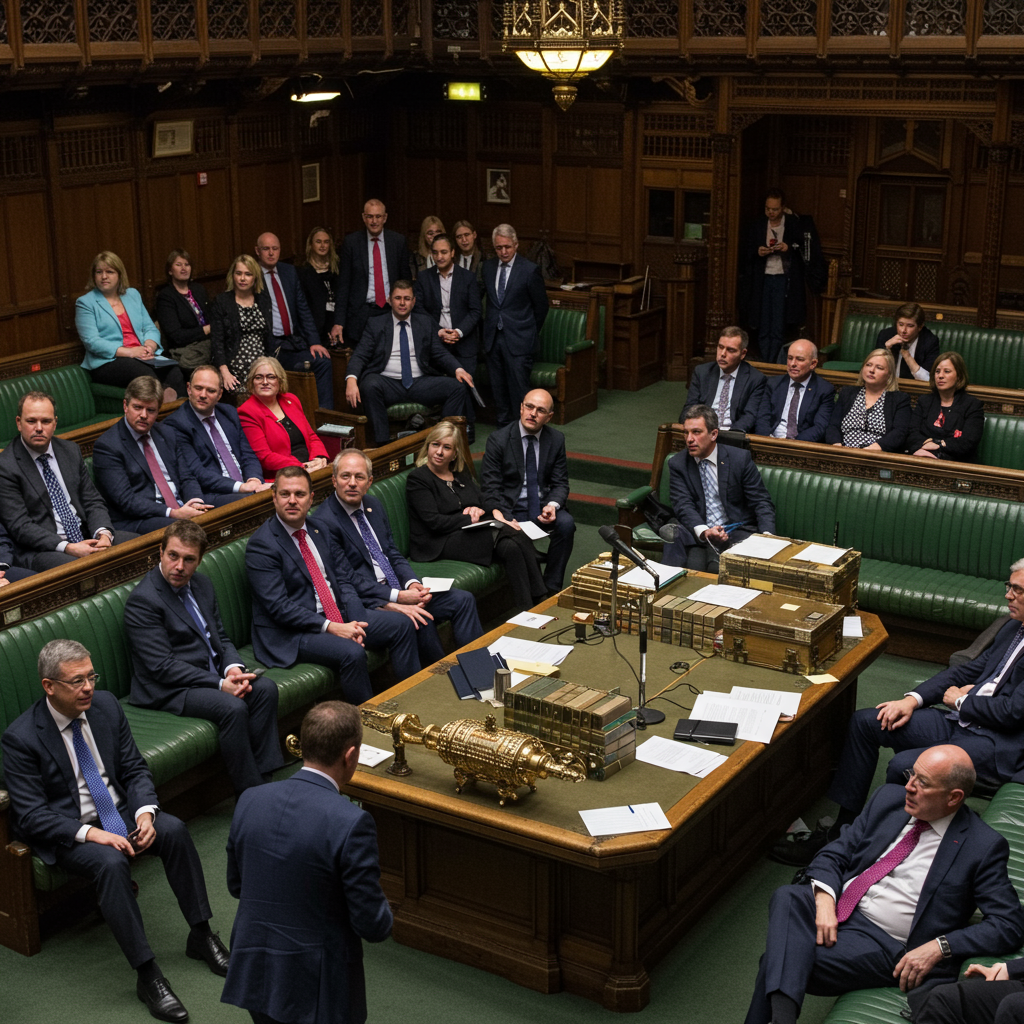Hungary’s political landscape is shifting, marked by a popular saying that translates to “The ice-cream licks back.” This vivid phrase cautions that what one enjoys consuming might eventually consume them. For nearly two decades, Hungarian Prime Minister Viktor Orban has actively championed an “illiberal democracy” and a vision of “Christian liberty,” sharply opposing a liberal worldview.
Orban’s political model has garnered significant international attention and admiration. Prominent figures, including former US President Donald Trump, US Senator JD Vance, and Georgian Prime Minister Irakli Kobakhidze, have praised his approach. Trump specifically referred to Orban as “smart” and “a tough person,” highlighting his perceived strength.
Orban’s Grip Shows Signs of Weakening
Despite his carefully cultivated image as a global “strongman” leader and a tenure spanning 15 consecutive years (and 19 of the last 35 since communism fell), cracks are beginning to show in Orban’s domestic power base. The challenges he now faces are not primarily emerging from the traditional liberal opposition. Instead, a significant threat is materializing from unexpected quarters – specifically, from within the centre-right and even his own former circle.
Recent events underscore this shifting dynamic. An attempt by Orban’s Fidesz party to legally ban the Budapest Pride march ultimately failed to prevent the event. Last month, between 100,000 and 200,000 people marched, a dramatic increase from just 35,000 the previous year. This mass turnout, in defiance of the government’s stance, signals a notable willingness among segments of the population to push back against the government’s cultural agenda. While Fidesz supporters attempted to use aspects of the march to rally their base, the sheer scale of participation demonstrated a challenge to state authority.
Scandal Rocks Traditional Values Narrative
A pivotal moment occurred in February 2024 following a scandal involving a presidential pardon granted to an individual convicted of covering up child sexual abuse. This incident deeply impacted the government’s carefully constructed image as protectors of traditional family values. It led to the highly public resignation of President Katalin Novak, televised live, and the departure of Justice Minister Judit Varga. The scandal created a vacuum and opportunity that was quickly seized upon.
The Rise of a Challenger From Within: Peter Magyar
The most potent challenge to Orban’s long rule has come from 44-year-old Peter Magyar. Magyar, formerly married to Judit Varga, was once a part of Orban’s inner circle. He emerged seemingly out of nowhere in the wake of the pardon scandal, positioning himself as a surprise challenger.
Magyar’s strategy has been to directly attack the heart of the Fidesz government. He gave a widely publicized interview to a leading opposition YouTube channel, where he specifically called out the alleged nepotism and corruption rife within the ruling party. He has skillfully navigated the political landscape, reportedly treading carefully to avoid being labeled a liberal or leftist by the government-aligned media and Fidesz officials. This approach aims to connect with the conservative base in rural areas, historically a stronghold for Orban’s Fidesz party.
Focusing on Tangible Grievances
Crucially, Magyar has built his campaign around tangible, everyday issues affecting Hungarians. He tours the country, drawing large crowds by highlighting the poor conditions of state hospitals, the failing railway network, and public service wages among the lowest in Europe. His visits to healthcare facilities, schools, and care homes are often broadcast live online, attracting tens of thousands of viewers and fostering a direct connection with potential voters.
Magyar offers a compelling counter-narrative to Orban’s portrayal of a strong, resurgent Hungary. He speaks of a country in decline and promises to rebuild it “brick by brick.” This simple, resonant message has become a rallying cry for his supporters, who chant it back to him at rallies. Fidesz publicists have attempted to dismiss him as a “hollow messiah” or a traitor, but his message is clearly resonating with a significant portion of the electorate looking for an alternative vision for the homeland.
Polling Shifts Signal Trouble for Fidesz
The impact of Magyar’s challenge is clearly reflected in national public opinion polls. Most surveys now indicate that his party, Tisza (which he leads), holds a substantial lead over Orban’s Fidesz party, ranging from 9% to 18% ahead. This represents a significant shift in voter sentiment. Only one pro-government think tank, the Viewpoint Institute, still shows Fidesz narrowly ahead, a finding often viewed skeptically by independent observers.
The growing support for Tisza underscores that Hungarian voters are increasingly concerned with practical issues like the state of public services and perceived government corruption. These bread-and-butter issues appear to be cutting through Orban’s established political messaging and tactics.
Orban’s Playbook Faces Resistance
For years, Viktor Orban’s political success relied on a highly effective playbook. After Fidesz shifted from its early liberal roots to embrace a conservative, nationalist, right-wing identity in the early 1990s, Orban consistently demonstrated an ability to tap into and amplify voters’ fears. This tactic contributed significantly to his landslide election victories in 2010, 2014, 2018, and 2022.
A cornerstone of his method was also restructuring Hungary’s electoral system in 2011. This included reducing the size of Parliament from 386 seats to 199 and eliminating the second round of voting. These changes effectively channel votes towards the strongest party (Fidesz) and make it incredibly difficult for fragmented opposition parties to gain significant representation. He has also appointed judges perceived as loyal to Fidesz to key positions in the Constitutional and Supreme Courts, solidifying his control over state institutions.
Messaging and Media Control
Orban’s communication strategy relies heavily on simplicity and repetition. Messages are often distilled into bullet points, derived from government-commissioned opinion surveys designed to identify public anxieties. This messaging is then amplified through a powerful echo chamber created by pro-government media outlets, social media platforms, and nationwide billboards. This system was designed to dominate the public discourse and drown out opposition voices.
However, this long-established playbook seems to be losing its effectiveness at home. While Orban remains a popular figure among some international leaders and factions (such as certain MAGA Republicans who admire his stance against “woke” culture, and leaders in Slovakia, Georgia, Germany, the Netherlands, and Austria), his domestic support is being eroded by tangible realities and a credible challenger.
Foreign Policy and Economic Pressures
Orban’s foreign policy, marked by opposition to military aid for Ukraine and its EU membership bid, and a close relationship with Russian President Vladimir Putin, is also part of his narrative. He has framed his stance as promoting peace and ensuring access to cheap Russian energy, shielding Hungarians from the full impact of EU sanctions (though Hungary has not blocked any of the 18 sanctions packages).
However, the Hungarian economy, heavily dependent on sectors like German car manufacturing, is currently stagnating. This economic reality makes it increasingly difficult for Orban to deliver the improved standard of living that was a key factor in his past electoral successes. The inability to provide tangible economic benefits weakens his appeal to voters whose primary concerns are now domestic hardships.
The Stakes of the 2026 Election
The upcoming election in April 2026 is shaping up to be a monumental contest for Hungary. It is increasingly seen as a battle for the nation’s future direction. Both Fidesz and the emergent Tisza party led by Peter Magyar appear to command core support bases of roughly two million people each, according to analysis by political experts.
The key to victory will likely lie with the currently undecided voters, estimated to be between 500,000 and one million people. These are the individuals that both sides will desperately try to win over. Political analyst Zoltan Kiszelly, who is close to Fidesz, acknowledges the need to find policy issues that can attract this crucial swing demographic.
Orban may attempt to reprise tactics from 2022, when he successfully portrayed himself as the “peace” candidate amid the Ukraine war, claiming the opposition would drag Hungary into conflict. If the war continues, Fidesz might escalate campaigns against figures like Manfred Weber, leader of the European People’s Party (EPP), who supports Western military aid for Ukraine, allowing Orban to frame himself again as a “dove of peace.” If the war ends, he could claim credit as a Western leader who predicted Ukraine could not defeat Russia’s military might.
Yet, despite these potential strategies, the accumulated conflicts and challenges from a long period in power inevitably erode trust and respect within the political community, as noted even by philosophers considered influential on the Prime Minister. Peter Magyar and the Tisza party hope to capitalize on this erosion of trust by offering a clear alternative focused on repairing the country from the ground up. Opposition activists like Robert Puzser believe Tisza will eventually succeed, arguing Hungary stands at a crossroads between a “democratic transition” and a “despotic path.”
Frequently Asked Questions
What is Peter Magyar’s background and how did he emerge as a challenger to Viktor Orban?
Peter Magyar is a former insider from Viktor Orban’s circle. He was married to Judit Varga, who resigned as Justice Minister following a scandal in February 2024 involving a presidential pardon related to a child sexual abuse cover-up case. Magyar emerged publicly after this scandal, giving interviews criticizing the government’s alleged nepotism and corruption, effectively leveraging the public outcry to launch his political challenge from a position within the traditional right.
What are the main issues weakening Viktor Orban’s power base in Hungary?
Several factors are contributing to pressure on Orban’s government. These include the rise of Peter Magyar as a credible challenger appealing to centre-right voters, public discontent over the poor state of essential public services like healthcare, education, and railways, and economic stagnation making it harder for Orban to deliver improved living standards. Additionally, defiance against government policies, like the large turnout at the Budapest Pride march, and past scandals have eroded trust and challenged his key narratives.
How significant is the upcoming 2026 election for Hungary’s political future?
The April 2026 election is considered highly significant, potentially marking a major turning point for Hungary. After 15 consecutive years under Viktor Orban’s leadership, his Fidesz party faces a strong challenge from Peter Magyar’s Tisza party. Polls show Tisza often leading. With both major parties having similar core support, the outcome will likely be decided by undecided voters, suggesting a competitive and potentially transformative election that could shift Hungary’s trajectory away from its current “illiberal” system.


